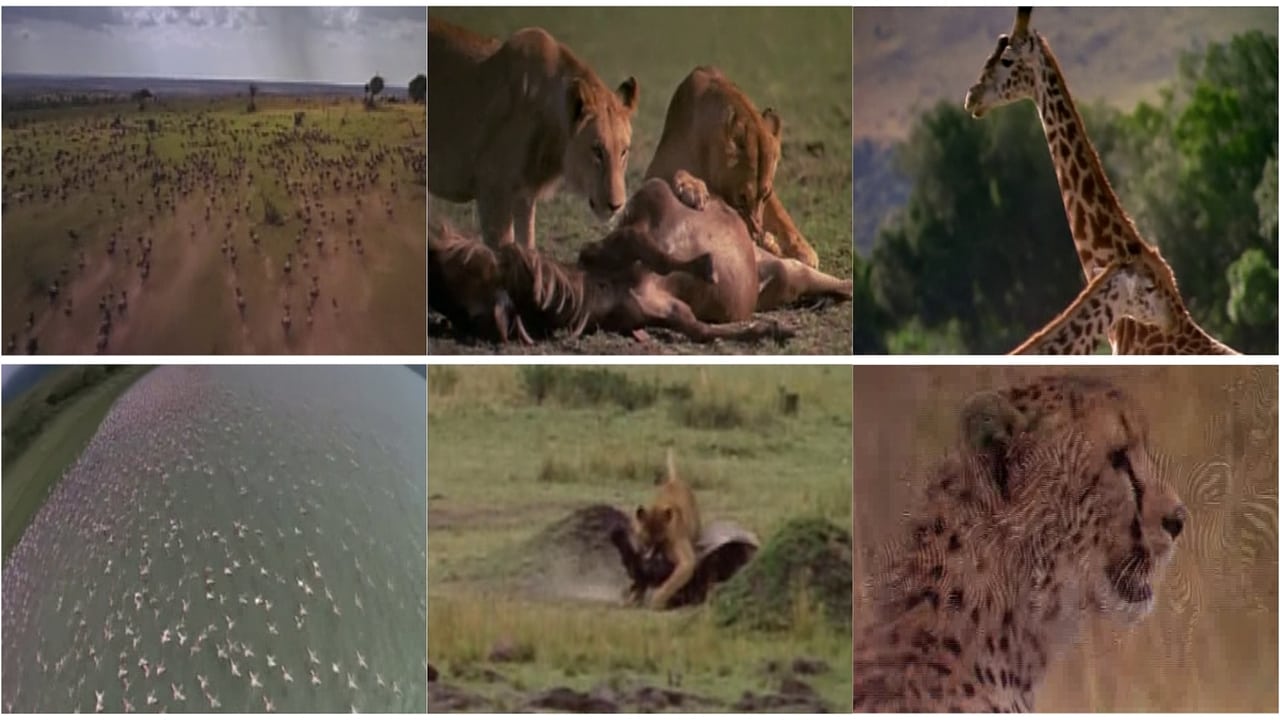

"Africa: The Serengeti" is another 40-minute documentary by 4-time Oscar nominee George Casey and even if this one here was not in contention for an Academy Award, I still found it a pretty good watch. It is fairly difficult to elaborate on such a diverse topic like the Serengeti in such a short film, but I believe Casey did a convincing job. He never goes too much into detail that it becomes uninteresting to audiences, but still teaches us a couple interesting facts. The narrator is James Earl Jones and he voiced this one fittingly the very same year he worked on "The Lion king", which is still his most known work over 20 years later. But this classic should not be the topic today. Lats talk a bit more about this great documentary we have here. Buffaloes, lions and crocodiles all get their fair amount if screen time in this one and occasionally, we also find out about the people living there in deepest Africa, the so-called Maasai and also about the climate, vegetation and a couple other subjects. This documentary can be a great watch to aspiring nature documentary makers, but also for those who just love the genre. Like myself. I highly recommend checking it out. Thumbs up for one of IMAX' finest.
... View MoreThe animals living in the wilds of Africa have an order, a schedule and a system of natural law by which that spend their entire lives. Deviate from them and you're dead. That is the central idea presented by 'Africa: The Serengeti' a spectacular and sometimes breathtaking IMAX feature created by George Casey who also directed the stunning 'Ring of Fire'.We learn that there is order in nature by which the lioness kills for food then gives the carcass to the male. The male has his share then the lioness and the cubs, then the smaller predators on down to the vultures. This is a system and a way of life.Early on we meet the Wildebeests who will become the focal point of Casey's film. They are cattle who seem to serve the basic functions of their own survival but from the film's point of view they are also a major source of food for lions if they aren't careful. In one tense moment we see a herd walking cautiously past a den of lions waiting in the bush for their moment of attack. That's just one of the many stunning moments that Casey was able to capture. There is a heartbreaking scene in which the wildebeest heard attempts to climb some slippery rocks to evade alligators. Some become too exhausted to carry on and will eventually become food.Sometimes we feel like interlopers especially in the mating scenes in which the male lion almost seems boorish, this followed by an extreme close-up of the two blissful lions sleeping in the sun. But it also offers some images that aren't so easy to take like vultures picking the bones of a wildebeest to which narrator James Earl Jones offers 'In nature, nothing is wasted'. We get a stomach-churning glimpse of the cheetah as it hunts down a wildebeest and rips it apart.To say that the photography of 'Africa: The Serengeti' is breathtaking is an understatement but the central theme of the film is that the order of the wild happens because out there it's survival of the fittest. Even the infants are at risk if they don't pull their weight.Because it is a documentary and subsequently a mirror of life we don't know what to predict. After having seen the wildebeests give birth we are told the if they don't get up and walk then the heard will abandon them. Sure enough one had trouble and the heard moves on. We fear for its life because we know that it can't possibly survive. In one surprisingly emotional moment the young cow springs to its feet and catches up with the family, the kind of stirring moment that only real life can provide.*** (of four)
... View MoreLike any nature-log you might see on Animal Planet. But bigger. The photography is stunning, but somehow I left the theater thinking that they could have made a much more exciting film. Despite the killing scenes, it overall had a serene feel. And what was up with the balloon people and the tribesmen? Quite tangential and not really belonging with the animal stuff. There wasn't even really much of a connection. At not least one that we saw depicted.I think films like this are a waste of the IMAX medium. I would never knock natural beauty, but why do you need IMAX for that? For REALLY BIG natural beauty? No, the wonderful thing about IMAX is the ability to make you feel like you're there. So SCARE me! Put my heart in my mouth! To see the medium utilized to the fullest, see "NASCAR 3-D."
... View MoreThis is a great documentary with some amazing footage of wild animals. My only complaint is that they showed humans, that ruined it for me. They showed about 5 minutes of africans in the serengeti and how they live, also they showed a little bit of visitors in hot air baloons. IMO, I would have rathered that they kept it only about the wild animals, we see humans every day and it's too bad that they included some here. So without this, I would have given it a 10/10. But since there are humans, I give it 8/10. But a big two thumbs up to IMAZ, this is great stuff!
... View More